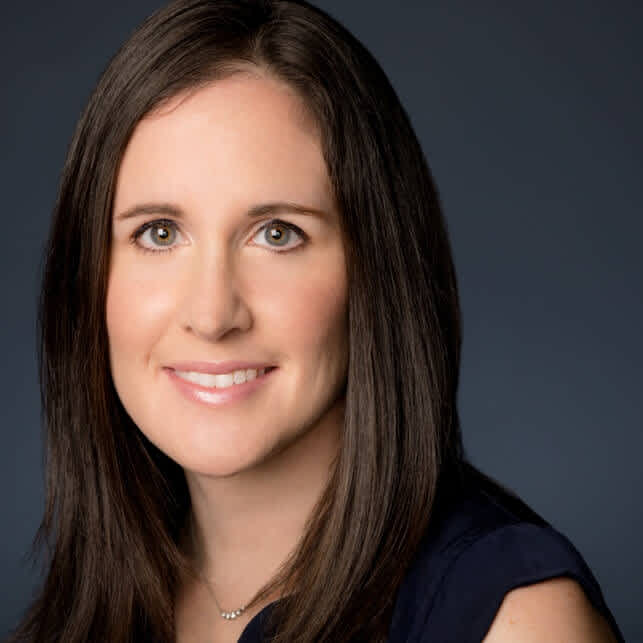Work, Life, Balanced
Have a 6-Year-Old? Fabric’s Top 10 Things to Know
By Beth Braverman — Feb 11, 2020

Alas, did you ever think your little nugget would start to become mature?
I knew I didn’t have a “little kid” anymore when my 6-year-old started getting out of bed in the morning and not padding into our room to tell us that he was awake. While I enjoyed the extra few minutes of shut-eye, it also came with a realization: He needed us just a little bit less.
Generally, around age 6, kids grow more comfortable attending school and socializing in a world without a parent hovering. They’ll continue to become more independent this year, but they’ll still enjoy your attention. Throughout all those changes, it remains important to make time for play, and to maintain a routine at home.
From managing your finances accordingly to keeping up with your child’s developmental progress, here’s what else you need to know.
1. Financial Literacy for Kids: Make Money Less Invisible
If you often use a credit card for in-store purchases or to pay bills, your children may not have much opportunity to see you physically using or spending money.
“We’re living in a world of invisible money, and parents need to change the way they teach their kids about money,” says Gregg Murset, CEO of BusyKid, a chores and allowance app, and a Certified Financial Planner.
By age 6, your child should be old enough to understand more about how money works. To help jumpstart financial literacy for your own kids, next time you take your credit card out or start to pay bills, call your child over to explain what you’re doing and how it affects your finances.
2. Enjoy Your Respite From Temper Tantrums (Finally!)
As you probably already learned, those terrible twos can last for years. By age 6, however, most kids have gained a bit of control over their emotions and developed the language skills to more clearly express what’s bothering them.
They may also be more receptive to logical explanations of why they’re not able to get what they want.
3. Make Time for Homework
Many schools start sending home small assignments with first graders, both for the sake of actual learning and to help them practice the act of doing homework. In the beginning, you’ll likely have to supervise in order to keep your little one focused.
Roberta Golinkoff, a professor in both the education and the psychology departments at the University of Delaware, recommends having 6-year-olds do homework at the kitchen table, rather than alone in a bedroom. “That way they have company, and can ask for advice when they need it,” she says.
4. Open a Bank Account for Your Kid
By now your child may have enough cash from birthdays and allowance to warrant opening a bank account. Take them with you to the bank to open an account in their name and deposit the cash. When you get home, log onto the account and show your kid how they can track the balance over time.
Use the bank where you already have an account, and you’ll be able to make transfers directly into their account for allowance or other purposes. Then you can let him “make withdrawals” by giving them cash and debiting their account (by transferring the amount back to your own).
5. Get Physical With Sports
Many 6-year-olds are honing their gross motor skills and starting to show interest in specific sports. Encourage your child’s interests by playing their chosen sport with them, or signing them up for an after-school activity.
This offers them a chance to move after a long day at school, and gives them a chance to develop confidence outside of the classroom. “Kids need exercise just like we do,” Golinkoff says. “It also builds bones and has a wonderful effect on their ability to work in teams and to collaborate with people. Not every kid will want to do sports, but it’s definitely a good thing to try.”
If you do end up wanting to pay for a sports league or after school activity, remember to add this to your monthly and yearly budget, so you’re planning accordingly.
6. Lead by Example (Financially)
Show your 6-year-old how you’re applying money principles in your own life by talking through everyday purchases with them. Demonstrating smart decision-making can be powerful. At the grocery store, for example, you might discuss how your body needs vegetables even though you want candy, says Cynthia Meyer, a certified financial planner with Financial Finesse.
Another example: When you’re buying a car, you can talk about needs, such as four-wheel drive and safety features, as opposed to wants like a sunroof or a DVD player.
7. Provide Healthy Options
While toddlers can be picky eaters, they may get even pickier around this age. “If you’re already in the habit of catering to what your kids eat and being a short order cook, their requests are going to get more and more narrow,” says child psychologist Kathleen Cuneo. “It’s just a power dynamic. The harder the parent pushes, the more the kid digs in and won’t cooperate.”
While you don’t want to turn mealtimes into battles, you also want to make sure that your child is getting their nutritional needs met. Make sure to have plenty of healthy options available for meals and snacks, including a few that you know they’ll definitely eat.
8. Think Long-Term, Too
The financial demands of small children can feel all-encompassing, making it easy to forget about your own long-term financial goals. Pause for a holistic look. If you’re not saving at least 15 percent for retirement savings, look for ways to cut your budget or make a commitment to increase your savings rate the next time your income goes up. (Here are six different types of IRAs you should know about.)
Similarly, pause to think about what would happen to your family if you were no longer around. Is your life insurance sufficient to cover your family’s needs? Do you need to update your policy in any way? (If you don’t have life insurance, it’s an important way to help protect your family. You can apply through Fabric in just 10 minutes online.)
9. Boost Your Credit Score
Maintaining good credit has a host of financial benefits, from making it easier to get a loan at the best possible rates to improving your ability to get a job or rent an apartment. You can pull your credit report for free once a year at annualcreditreport.com. The important thing here is to check for any discrepancies.
Meanwhile, your credit score is a numerical summary of how your credit is doing. You can check your score for free at a site like Credit Karma. If your score is lower than you’d like, focus on making on-time payments (setting up auto-pay can help) and reducing the total amount of debt that you’re carrying.
“Poor credit is one of those things that has a compounding impact,” says Jamie Hopkins, a professor of retirement income planning at the American College of Financial Services. “Bad credit early in your life makes borrowing more expensive. When every time you need to do something it’s more expensive, that compounds over your life.”
10. Consider College Savings
If your retirement savings are on track, then it might be a good idea to do an audit of your plan (if any) to save for your children’s college education. It’s hard to believe, but your little one is already a third of the way through his pre-college life. If you’re planning to help them with some or all of their college expenses, you should already be setting aside money to do so.
That said, it’s never too late to start. Saving for college should come after your other financial goals, since it’s possible to borrow money for college but not for retirement.
Putting money into a 529 plan, which grows tax-free and can be withdrawn tax-free when used for qualified education expenses, is a good place to start.
Six-year-olds are starting to become more independent, but you’ve still got a lot of influence over your little one. Instilling smart money habits now will set them on a path toward financial literacy that will serve them well as they gets older.
Curious what the future has in store? Sneak a preview of what to expect with a 7-year-old. Or check out our money to-dos for years 1 to 10 of your kid's life.
Fabric exists to help young families master their money. Our articles abide by strict editorial standards.
Information provided is general and educational in nature, is not financial advice, and all products or services discussed may not be offered by Fabric by Gerber Life (“the Company”). The information is not intended to be, and should not be construed as, legal or tax advice. The Company does not provide legal or tax advice. Consult an attorney or tax advisor regarding your specific legal or tax situation. Laws of a specific state or laws relevant to a particular situation may affect the applicability, accuracy, or completeness of this information. Federal and state laws and regulations are complex and are subject to change. The Company makes no warranties with regard to the information or results obtained by its use. The Company disclaims any liability arising out of your use of, or reliance on, the information. The views and opinions of third-party content providers are solely those of the author and not Fabric by Gerber Life.

Written by
Beth Braverman
Related Posts
Work, Life, Balanced
CFPs, Money Coaches and More: Which Financial Professional Is Right for You?
A financial professional can help you manage your money. What type of financial pro you need can depend on the kind of help you’re looking for.
By Jessica Sillers
Work, Life, Balanced
What Parents Need to Know About Taxes in 2025
Tax credits or deductions can help families lower taxes and keep more money to enjoy with your kids.
By Jessica Sillers
Work, Life, Balanced
Does Your Partner Lie About Money? Ways to Find—and Fix—Financial Infidelity
Financial infidelity, or being dishonest about money with your partner, can affect your finances and relationship. Spot unhealthy patterns and learn ways to build money habits that strengthen your bond.
By Jessica Sillers
Fabric Picks
Saving/Investing for Kids
How to Do 30 Days of Financial Self-Care as a Parent
Self-care comes in many forms, including how you handle your money. See how small steps may add up to help improve your financial well-being.
By Jessica Sillers
Life insurance
What to Do at the End of Your Life Insurance Term
Term life insurance, by definition, ends. Check that you’re ready for a smooth transition out of your policy, or take steps to continue the best coverage fit for you.
By Jessica Sillers
Saving/Investing for Kids
Investing Strategies for Beginners
Investing can be a sound strategy to help grow your finances over time. Start by identifying which strategy and account type works best for you.